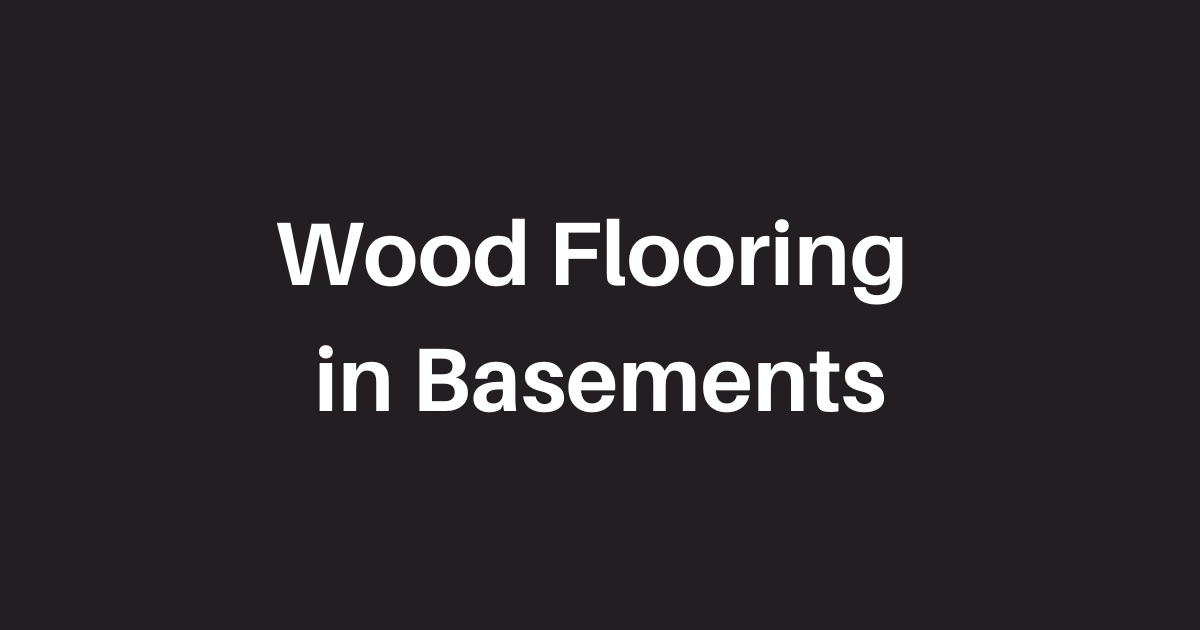Wood Flooring in Your Basement?

Have you been thinking about installing wood flooring in your basement? We don’t blame you! The warmth and quality look of wood is very attractive. But wood and moisture do not mix, so be honest about your situation – wood flooring may not be appropriate for your basement floor.
What are the options for your project and what are the issues to be aware of?
Concrete Basement Slab
First consider the substrate for your new floor. Most basements have a concrete slab floor. Make sure it is smooth and dry.
- Visually observe the concrete slab to determine if it is level and smooth. If it is not level and smooth, you will want to modify the existing slab.
- Check the moisture content in your concrete floor. It’s easy! Duct tape a small sheet of plastic to the floor. Leave it for 24 to 48 hours to see if moisture develops. If it does, you will want to make changes to remove the excess moisture that is coming through the slab.
Moisture is the Enemy of Wood Flooring
If your concrete slab shows signs of moisture or you know moisture is present when it rains, you will want to remove the source of moisture prior to installing the wood flooring. What is the source of water? This can sometimes be hard to determine.
You may be able to go around the outside of your building and visually inspect for areas where moisture may be coming in. The ground should be sloping away from the structure to divert rainwater from the foundation. Sometimes, the ground form needs to be modified prior to starting a basement flooring project. Swales can be helpful at diverting rainwater.
Are the gutters and downspouts functioning properly? If they are clogged or are not capturing storm run-off, this could be the source of your moisture problem.
You may need to install a sump pump to remove excess ground water. If there is already a sump pump present, you may want to increase the capacity of the existing sump pump to remove the water that is under the basement floor slab. Invest in a back-up system in case the original pump stops functioning. If you are confident the moisture issue has been resolved, you can move ahead with your flooring project.
Wood Flooring Materials
- Strip Wood – Strip wood flooring is not a good choice for basements. It is installed directly in contact with the sub-floor. Because of this, moisture is trapped between the wood flooring and concrete slab. It has no finish on the back side of the material so it readily absorbs the moisture from the slab. When strip flooring gets damp, it cups and deforms. Mold may develop below the wood flooring too.
- Floating Systems – Laminate Wood and Engineered Wood are floating systems that work well in basements. The flooring is not in direct contact with the concrete sub-floor, but instead “floats” on a support system above the concrete slab. In addition, there is an all-important air space between the two materials. The air space prevents any moisture from being trapped directly below the flooring. Without the airspace, the wood will buckle and deteriorate and mold may grow in the moist environment below the wood flooring. Armstrong, Shaw and Bruce are well-known manufacturers of floating wood flooring systems.
Final Note
Of course, no flooring material will perform well in a wet or flooded condition. Before starting a wood flooring project, make sure the concrete slab is dry and will remain dry. Remember, wood and moisture do not mix!



